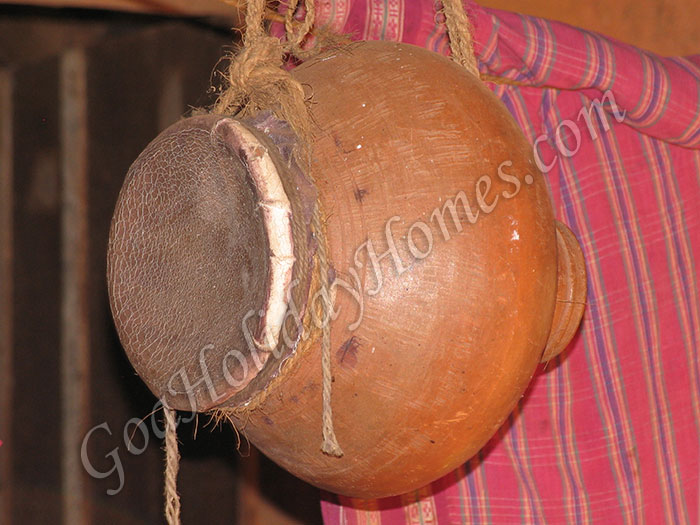Percussion Instruments of Goa
In Goa, an assortment of traditional percussion instruments are used during festivals, ceremonies and rituals. Most of them are locally made, while some are on the verge of extinction.
Ghumat
The ghumat is an ancient percussion instrument. It is an earthen pot with two mouths, one of which is wide and the other is narrow. The wider mouth is covered with monitor lizard skin, secured with cotton string. The ghumat is suspended from the neck or tied to the waist of the musician. It is the most common folk percussion instrument in use.
Mridang
This instrument was commonly used in temples. It is similar to the pakhawaj in many ways. A mridang player strikes the instrument with his hand, with the fingers clapsed and released to create a desired sound.
Zod Shamel
Zod Shamel is a pair of 'Shamel', slightly different from the original Shamel. The player maintains the rhythm by beating it with two cane sticks. While one stick is thin and straight, the other has a slightly curvy end, which produces a distinct sound.
Mhadalem
This is perhaps the most ancient of all percussion instruments. It is used as an accompaniment to the ghumat during the Zagor performance. It is an earthen baked cylinder covered with monitor lizard skin.
Dhol
The dhol is one of the common percussion instruments of Goa, used largely in folk music. There are several varieties of the dhol. It is a barrel shaped drum made of wood, with goat skin stretched across both ends.
Damaru
The damaru is a small drum shaped like an hourglass. It is associated with Lord Shiva.

